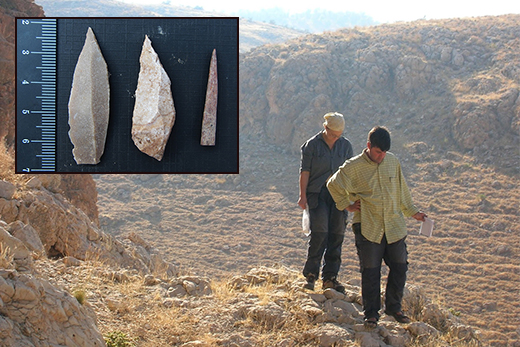Thousands of stone tools from the early Upper Paleolithic, unearthed from a cave in Jordan, reveal clues about how humans may have started organizing into more complex social groups by planning tasks and specializing in different technical skills.
The Journal of Human Evolution published a study of the artifacts from Mughr el-Hamamah, or Cave of the Doves, led by Emory University anthropologists Liv Nilsson Stutz and Aaron Jonas Stutz.
“We have achieved remarkably accurate estimates of 40,000 to 45,000 years ago for the earliest Upper Paleolithic stone tools in the Near East,” says Aaron Stutz, an associate professor at Emory's Oxford College. “Our findings confirm that the Upper Paleolithic began in the region no later than 42,000 years ago, and likely at least 44,600 years ago.”
The rich array of artifacts shows a mix of techniques for making points, blades, scrapers and cutting flakes. “These toolmakers appear to have achieved a division of labor that may have been part of an emerging pattern of more organized social structures,” Stutz says.

Anthropologists Liv Nilsson Stutz and Aaron Stutz in the field, on the terrace of Mughr el-Hamamah in Jordan.
(Inset) Two stone tool points made using a prismatic blade technique (left and center), and a bone point or needle (right).
